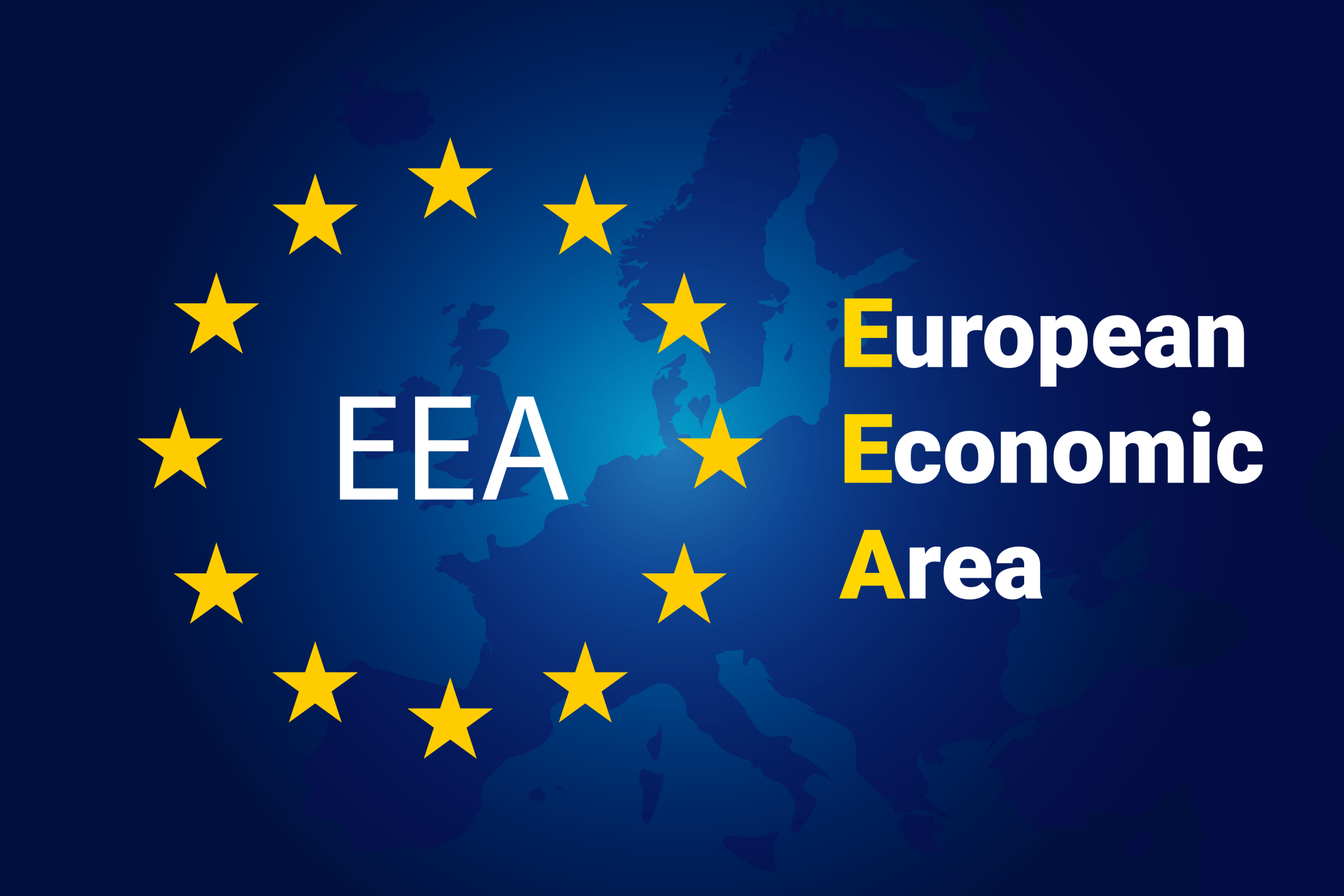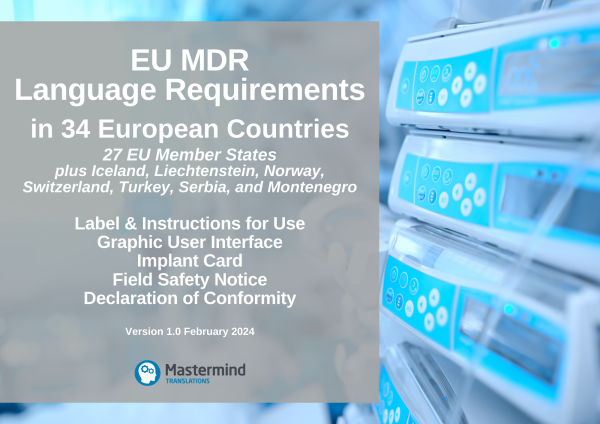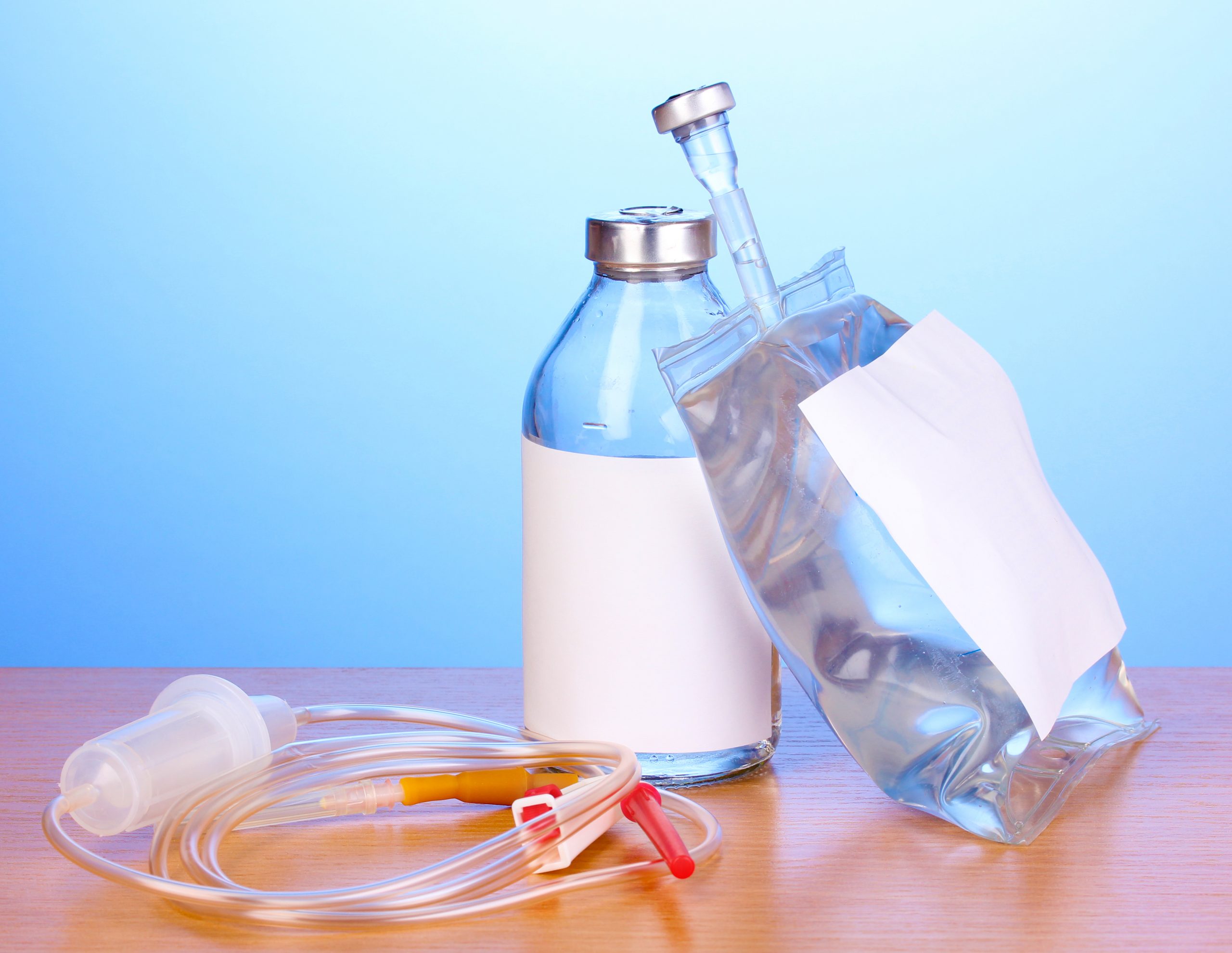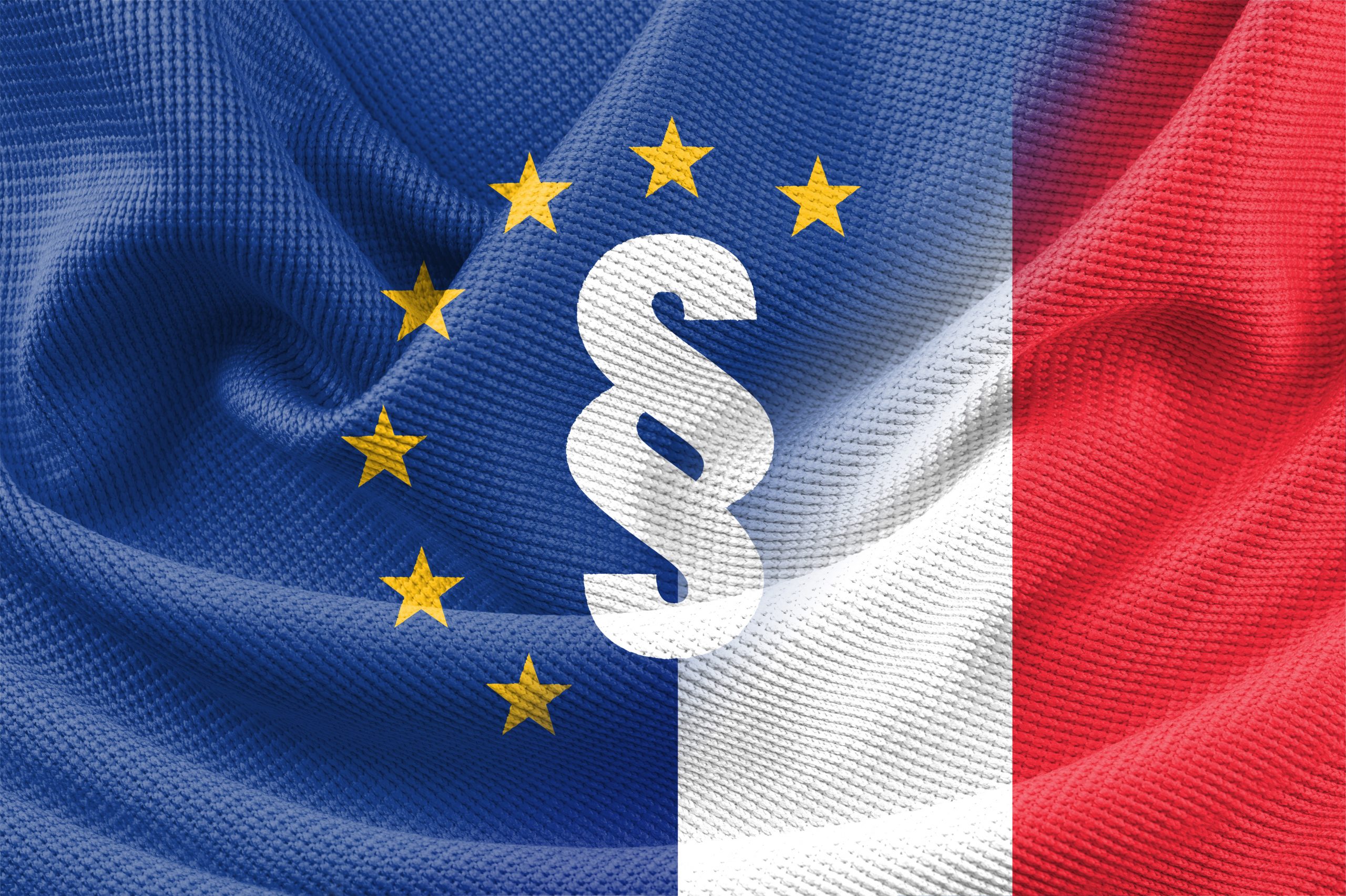Although the MDR and the IVDR are medical device regulations of the EU, their application extends beyond the EU to other European Economic Area countries which enjoy access to the European single market. In this article, we discuss the EU MDR/IVDR language requirements in the EEA-EFTA countries of Iceland, Liechtenstein, and Norway.
Before we examine the EU MDR/IVDR language requirements in the EEA-EFTA countries in more detail, it is worth explaining some basic concepts related to the EEA.
What is the European single market?
The European single market, also referred to as the European internal market or common market, is a single market comprised of the 27 EU Member States as well as – with certain exceptions – the EFTA Member States of Iceland, Liechtenstein, and Norway through the Agreement on the European Economic Area, and Switzerland through bilateral treaties. The single market seeks to guarantee the free movement of goods, capital, services, and people, known collectively as the “four freedoms”.
What is the European Free Trade Association?
The European Free Trade Association (EFTA) is an intergovernmental organisation that promotes free trade and economic integration. It is comprised of four Member States: Iceland, Liechtenstein, Norway, and Switzerland. EFTA manages the free trade between its four members, the participation of Iceland, Liechtenstein, and Norway in the European Economic Area, and EFTA’s worldwide network of free trade agreements. EFTA does not envisage political integration or a customs union. Of relevance to our discussion is the fact that EFTA does not issue legislation.
What is the European Economic Area?
The European Economic Area (EEA) is comprised of 30 European countries. These are all 27 EU Member States, plus Iceland, Liechtenstein, and Norway. Iceland, Liechtenstein, and Norway are three out of the four countries of EFTA, and they are Contracting Parties to the Agreement on the European Economic Area. The EEA Agreement links the 27 EU Member States and the three participating EFTA States into the internal market of the EU, creating a homogenous European Economic Area. Switzerland, the fourth EFTA State, has not joined the EEA, but has a set of bilateral sectoral agreements with the EU which allow it to enjoy some of the benefits of the EU’s internal market. The EEA Agreement guarantees equal rights and obligations within the internal market. More importantly for the purpose of our discussion, it provides for the inclusion of EU legislation covering the four freedoms throughout the 30 EEA States. This means that although Iceland, Liechtenstein, and Norway are not EU Member States, they still comply with most EU legislative acts concerning the internal market, including the Medical Device Regulation (EU) 2017/745 and the In Vitro Diagnostic Medical Device Regulation (EU) 2017/746.
How does EU legislation become applicable in the EEA-EFTA countries of Iceland, Liechtenstein, and Norway?
In order to extend the applicability of an EU legal act beyond the 27 EU Member States to the three EEA‑EFTA States, the EU legal act has to be transformed into an EEA legal act. The EEA Agreement is based on the primary legislation of the EU (i.e. the Treaty of Rome) at the time when the EEA Agreement entered into force on 1 January 1994, and on secondary legislation of the EU (i.e. regulations, directives, decisions, and certain non-binding instruments that are relevant to the EEA). In practice, this means that large part of the EEA Agreement is static and identical to the relevant parts governing the four freedoms set out in the Treaty on the Functioning of the European Union, while the remaining parts are dynamic. The annexes that list the EU acts applicable to the EEA, including adaptation, are continuously updated with any new EU legislation. ‘How EU acts become EEA acts and the need for adaptations’ describes this process in more detail.
It is important to note that the EEA-EFTA States have not transferred any legislative powers to the EEA Joint Committee, an EEA-EU joint body responsible for the management of the EEA Agreement and the incorporation into it of EU legislation. The content of the MDR and the IVDR required changes to the existing national law of Iceland and Norway, therefore their national parliaments had to approve (i.e. ratify) them first, in order for the new legislation to be binding in their respective countries.
How are medical devices regulated in the EEA-EFTA countries?
In order to ensure homogeneity throughout the EEA, timely incorporation of EEA-relevant EU legislation into the EEA Agreement is crucial. Article 102(1) EEA provides that as soon as an EEA-relevant EU legal act has been adopted in the EU, the EEA Joint Committee should take a decision concerning the appropriate amendment of the EEA Agreement, with a view to ensuring simultaneous application of the legislation throughout the entire EEA.
Legislation on medical devices, including in vitro diagnostic medical devices, is contained in Annex II, Chapter XXX of the EEA Agreement. The MDR and the IVDR were incorporated in the EEA Agreement on 13th December 2019 and entered into force on 12th June 2020, with their respective compliance dates aligned with those of the EU.
What are the provisions for the EU MDR/IVDR language requirements in the EEA-EFTA countries?
In our articles ‘What Are the Language Requirements for Medical Devices Sold in the EU Market under the New EU Medical Devices Regulation?’ and ‘What Are the EU IVDR Language Requirements and Which Languages Does Each EU Member State Accept?’ we explained that the EU Member States must adhere to very specific rules regarding the information supplied with a medical device, including an in vitro diagnostic device (also abbreviated as IVD), but are given discretion to determine at their national level in which language(s) this information should be presented. The MDR/IVDR language requirements in the EEA-EFTA countries are based on the same provisions.
What are the MDR/IVDR language requirements in Iceland?
Iceland incorporated the MDR and the IVDR provisions in the Act on Medical Devices 132/2020 of 8th December 2020 (available in Icelandic only). The rules for the label and instructions for use are laid out in Article 12 and state that for medical devices intended for public use, the information must normally be in Icelandic. The information supplied with implantable devices and on implant cards must also be in Icelandic, as set out in Article 19. In addition, the Act authorises the Ministry of Health to issue a separate regulation specifying in more detail the rules for the information accompanying a medical device intended for use by laypersons and professionals, respectively. Such separate regulation takes the form of Regulation on instructions for use accompanying medical devices 630/2022 (available in Icelandic only). The Regulation makes provisions for language requirements in Article 3, which reconfirms that any information, including instructions for use, accompanying a medical device intended for use by the general public must be in Icelandic. This requirement is, however, waived for class I and IIa medical devices, which can have their instructions for use presented in English or a Scandinavian language other than Finnish. The same exemption applies to any class IIb and III medical devices included in the list published on the website of Lyfjastofnun, the Icelandic Medicines Agency.
Please see our EU MDR Language Requirements Table 2024 for an English translation of the relevant parts of the Act on Medical Devices 132/2020 and Regulation on instructions for use accompanying medical devices 630/2022 with clickable links to the official sources and the Lyfjastofnun’s exemption list.
What are the MDR/IVDR language requirements in Liechtenstein?
The MDR and the IVDR provisions incorporated in the EEA Agreement are directly applicable in the Principality of Liechtenstein without the need for prior parliamentary approval.
Provisions which are not explicitly stated in the MDR-relevant parts of the EEA Agreement are set out in the Regulation of 27 April 2021 on the movement of medical devices in the European Economic Area, referred to as EWR-MepV (available in German). This supplementary legislation lays down rules for the MDR language requirements. In particular, Part IV, Article 10(1) states that the label and instructions for use must be written in German. This obligation, however, may be waived for medical devices which are intended exclusively for use by healthcare professionals, are custom-made, or used in a healthcare facility. In such cases, English can be used instead, provided that the user has sufficient competence in English and consents to this information being provided in English, and the safety of the patient, user and other people, as well as the effectiveness and performance of the device, are not compromised. Field safety notices and the implant card must be in German. Technical documentation, including the declaration of conformity, can be supplied in German or English.
The IVDR language requirements are addressed in the Regulation of 3 May 2022 on the movement of in vitro diagnostic medical devices in the European Economic Area, referred to as EWR-IvDV (available in German). In a manner of analogy to the EWR-MepV, Part IV, Article 11(1) of the EWR-IvDV states that the label and instructions for use must be written in German. Again, this obligation may be waived for IVDs which are supplied exclusively to healthcare professionals or are produced and used in a healthcare facility. In those circumstances, English can be used instead of German, subject to the user having sufficient competence in English and consenting to this information being supplied in English, and provided that the safety of the patient, user and other people, as well as the effectiveness and performance of the IVD, are not compromised. In addition, in the case of IVDs for self-testing or near-patient testing, the information supplied with the device must be in German. Field safety notices must also be in German. Technical documentation, including the declaration of conformity, can be supplied in German or English.
Please see our EU MDR Language Requirements Table 2024 for English translation of the relevant parts of the EWR-MepV.
What are the MDR/IVDR language requirements in Norway?
In Norway, the EU MDR and IVDR provisions are implemented through the Act on Medical Devices (in Norwegian) which entered into force on 26th May 2021. Chapter III incudes supplementary national provisions on languages. In particular, Article 8 states that the label and instructions for use supplied with a medical device must be in Norwegian. Similarly, Article 15 sets out that the information, including the implant card, that is given to the patient with an implantable medical device must be in Norwegian. Norwegian is also required for the field safety notice, however in special cases English is acceptable until a Norwegian translation becomes available. Certain types of technical documentation, such as the declaration of conformity, can be in English or Norwegian. Other types, such as conformity assessment documentation, must be in English. The Norwegian Medicines Agency, however, reserves the right to make exceptions to the Norwegian language requirement for all information accompanying the device, as well as technical documentation apart from the field safety notice. Software must also be localised into Norwegian and provide information on safe and secure use of the device. For certain types of medical devices, electronic instructions for use (eIFU) are allowed, but they must also be in Norwegian. The Norwegian language requirement does not usually apply to service manuals.
Please see our EU MDR Language Requirements Table 2024 for an English translation of the relevant articles of the Act on Medical Devices, and more detailed information about the exemption from the Norwegian language requirement.
Which languages are accepted under the EU MDR/IVDR language requirements in the EEA-EFTA countries?
The languages accepted for the label/IFU under the EU MDR/IVDR language requirements in the EEA-EFTA countries of Iceland, Liechtenstein, and Norway are summarised below.
| EEA-EFTA Member State | For Layperson Use | For Professional Use |
| Iceland | Icelandic or English or another Scandinavian language other than Finnish, conditions apply* | Icelandic or English or another Scandinavian language other than Finnish |
| Liechtenstein | German | German or English, conditions apply,* |
| Norway | Norwegian, exemption allowed* | Norwegian, exemption allowed* |
*For more information, please refer to the EU MDR Language List which has been updated to include the information published by the European Commission in January 2024.
Where can we find more detailed information about the EU MDR/IVDR language requirements in the EEA-EFTA countries as well as the EU countries?
A summarised list of languages accepted in the 27 EU Member States under the MDR and the IVDR can be found in our articles:
- • Which Languages Are Accepted under the MDR Language Requirements in Each EU Member State?; and
- • What Are the EU IVDR Language Requirements and Which Languages Does Each EU Member State Accept?.
You can find more detailed information on which language(s) are accepted and subject to what conditions under the EU MDR language requirements in the EEA-EFTA countries of Iceland, Liechtenstein, and Norway as well as in the 27 EU Member States, Switzerland, Turkey, Serbia, and Montenegro, in our EU MDR Language Requirements Table 2024 language list. This very popular resource includes English summaries of national legislations detailing various exceptions and conditions, as well as clickable links to the official sources. It can be purchased below or from our online store where you can also download a free sample.







